Clarice Cliff
Who was Clarice Cliff?
Clarice Cliff was a well known 20th century ceramic artist who worked in the industry from 1922 to 1963. Cliff is known chiefly for her bold, colourful and distinctive designs and her works are highly sought after by collectors.
Born in Stoke on Trent, an area of England known for it's pottery, Clarice Cliff began working in the Staffordshire potteries at the young age of thirteen, adding the gold accents to the ceramics before learning the free hand painting that was to eventully become her forte .
Cliff had artistic ambiitions and attended nightclasses at the Burslem School of Art, an establishment that played an important role in the area's pottery industry.
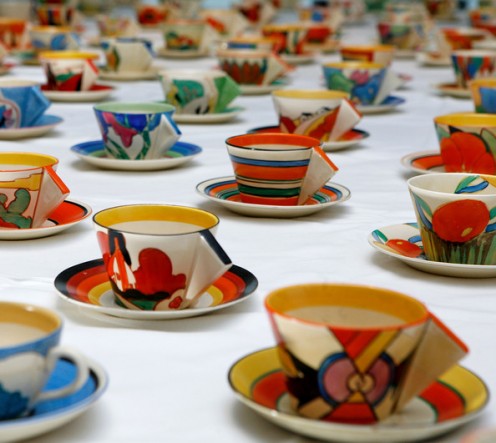
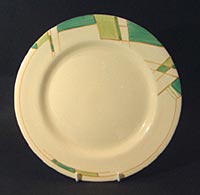
AJ Wilkinson
At 17, Ciiff moved to the Shorter Family's Burlsem Pottery; AJ Wilkinson, Royal Staffordshire Pottery. Colley and Guy Shorter had owned the pottery since 1894 and in 1940, Colley Shorter would become Clarice Cliff's husband. Colley was seventeen yers hers senior
The move also proved to be advantageous to Cliff's career and at Wilkinson she expanded her skill base, learning, among other things, gilding, modeling figurines and the ins and outs of hand painting. This was unusual, as at that time as the vast majority of young women who worked in the potteries tended to remain at the same pottery, mastering a single task and sticking with it.
Cliff's hard work and dedication to ceramic art eventually paid off and in 1927 she was given her own studio at Newport Pottery, which adjoined the main business. Clarice's boss, a man called Jack Warner, had drawn Colley shorter's attention to the talented young artist and, impressed, Colley had nurtured her career at Wilkinson's.
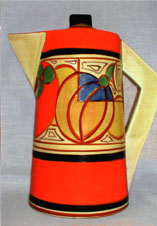
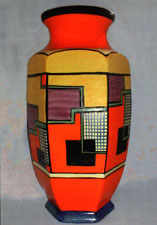
Art Deco
In the 1920s Clarice Cliff focused on producing unique art deco pieces, using bold, vibrant colours to accentuate the stark geometric lines of the deco style. Some of her favourite hues were red, orange, yellow and blue, which she often accented with thick black lines.
Working at the Newport pottery allowed Cliff to experiment with new designs and colours and she was more or less given a free reign to express her own original ideas.
One of her most popular lines were Fantasque and Bizarre Ware which she produced until the late 1930s and in an early exercise in PR, she had a team of "Bizarre girl" who travelled extensively to various trade fairs and exhibitions to promote her works. They also woked in the studio, hand painting under her direction.
Expansive Imagination
Art deco however, was not the only style Cliff designed and she also produced figural, landscape floral, cubist and abstract shapes. Clarice was one of the most prolific potters of the 20th century and also one of the most significant - the faith shown in her by the Shorters and her willingnes to experiment gave her a unique edge.
In the 1930s she became a houshold name and over a career that spanned more than fifty years, she produced hundreds of different ceramic styles. Her works were sold both domestically and overseas and she was given a custom back stamp that read:
Hand Painted Bizarre by Clarice Cliff Newport Pottery England.
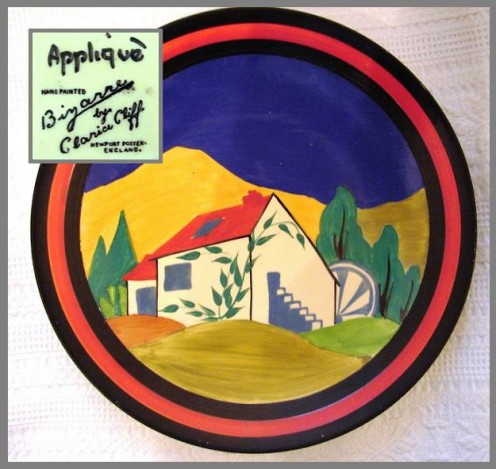
Collectable
Cliff's eccentric designs have sometimes been criticised as "garish", yet in recent years there's been a large and sweeping resurgance of interest in her art. Throughout her long career, Cliff rejected the 'rules' and the standards of design that many of her contemporaries devotedly followed and it's for this reason that her works are so very collectable today. Although her popularity waned for a time following her death, she is back with a vengeance.
Clarice Cliff's pottery pieces are now highly sought after by auction houses and many command very high prices, in the high thousands. As her designs are so distinctive a Clarice Cliff piece is easy to spot and the pieces may come with a printed signature (see above).
However, along with popularity comes imitation and fake Clarice Cliff works have been emerging since the 1970s. For tips on how to spot a forgery, try here:







